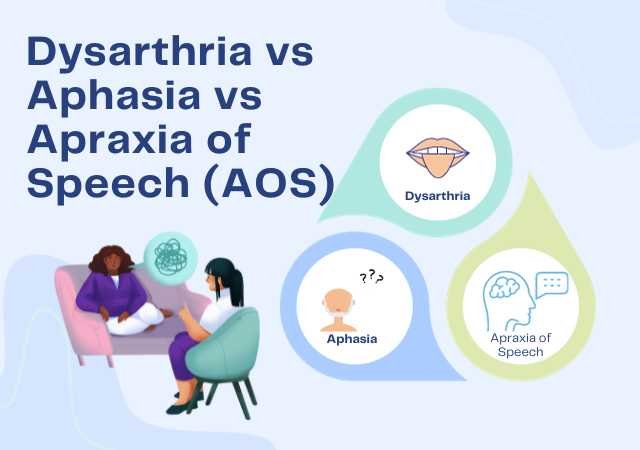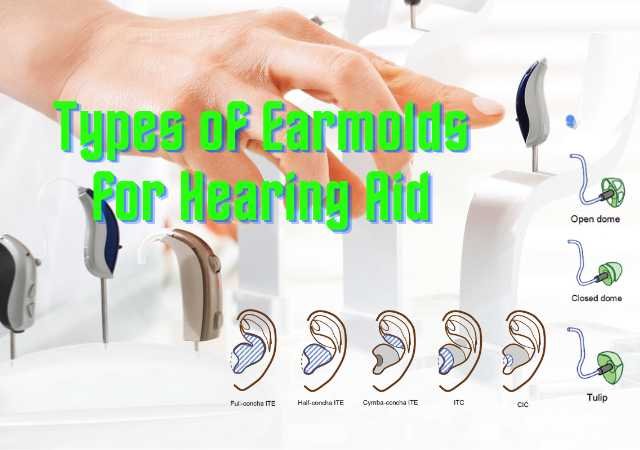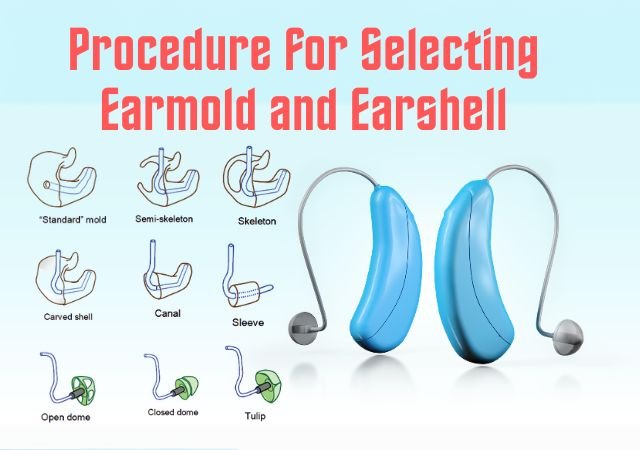
Dysarthria vs Aphasia vs Apraxia of Speech (AOS): Dysarthria, aphasia, and apraxia of speech (AOS) are among the speech and language disorders that can present unique challenges in diagnosis due to symptom overlap and comorbidity. The differences between dysarthria, aphasia, and AOS depend on the detailed knowledge of anatomical, vascular, and etiological characteristics, similar to the differentiation between apraxia of speech and dysarthrias. This exploration is designed to clarify, and to discuss the differences and similarities of such conditions, finally addressing specific situations such as dysarthria vs aphasia, expressive aphasia vs dysarthria, aphasia vs AOS and dysarthria vs AOS.
Dysarthria and aphasia share several clinical features but can usually be differentiated on anatomic, vascular, and etiologic examinations. Dysarthric individuals show speech-deficit first, compared to aphasic individuals who show task-defict first. The oral examination and language processing offer greater details on the differences between dysarthria and expressive aphasia, depending on the component being affected.
Differentiating dysarthria from apraxia of speech (AOS) is based on specific speech distortions related to neuromotor deficits versus verbal deficits related to language formulation deficits. Furthermore, both patients presented with dysarthria, dysarthria can co-exist with aphasia having a simultaneous impact on the effectiveness of communication and speech distortions cannot be delineated from each other [17]. AOS and dysarthria are both speech disorders but differ in anatomic, etiologic, oral mechanism findings and speech characteristics. Knowing these differences is of utmost importance for recognizing an accurate diagnosis and also crucial for appropriate therapeutic propositions. However, understanding the similarities, and how AOS may be distinguished from aphasia, is important, as is the acknowledgement that the behaviors observed and types of error are more critically important than the descriptor.
Dysarthria vs Aphasia
Expressive Aphasia vs Dysarthria
Differentiation between these disorders is not a difficult one because expressive aphasia and speech can both be dysarthrias. The key disparities lie in anatomical, vascular, and etiological factors, similar to those distinguishing apraxia of speech (AOS) from dysarthrias. In cases of expressive aphasia, aside from potential right central facial and lingual weakness, and non-verbal oral apraxia (NVOA), oral mechanism examinations often reveal normal results. Aphasic patients primarily exhibit language difficulties in verbal expression, reading comprehension, and writing, while other aspects of language processing remain intact.
On the contrary, individuals with dysarthria experience speech-related deficits exclusively, with no impairments in input or output modalities beyond speech. They typically have normal language skills (other than speech). The communication deficits in dysarthria specifically lie in the area of speech production and not in the areas of word-finding, language formulation or understanding.
Dysarthria vs Apraxia of Speech (AOS)
Differentiating between dysarthria and Apraxia of Speech (AOS) is usually easier than differentiating between different types of dysarthria. The primary difficulty arises when attempting to distinguish AOS from ataxic dysarthria or determining the coexistence of both AOS and dysarthria. In the latter scenario, separating apraxic characteristics from Upper Motor Neuron (UMN) dysarthric features becomes crucial. The subsequent sections provide a concise overview of the localization, etiology, oral mechanism, and speech characteristics associated with AOS and dysarthria, aiding in their effective differentiation.
Here’s a table highlighting the differences between Dysarthria and Apraxia of Speech:
Aspects | Dysarthria | Apraxia of Speech (AOS) |
Anatomy and Vascular Distribution | May be due to supratentorial, posterior fossa, spinal or peripheral lesions Lesions can be cortical or subcortical. | Supratentorial disease, typically due to left hemisphere pathology. Lesions in the carotid system, commonly the territory of the left middle cerebral artery. |
Etiology | Associated with a wide range of conditions including non-hemorrhagic stroke, degenerative diseases, trauma, neurosurgery, and tumors. | Often associated with nonhemorrhagic stroke; less frequently associated with degenerative diseases. Unusual in toxic-metabolic and infectious disorders. Not associated with peripheral nervous system conditions. |
Oral Mechanism Findings | Distinctive oral mechanism findings are more common in dysarthria. AOS can be present without abnormal oral mechanism findings, except for nonverbal oral apraxia (NVOA). | AOS can be present without any abnormal oral mechanism findings. NVOA is a positive finding in AOS, uncommon in dysarthria. |
Speech Characteristics | All components of speech (respiration, phonation, resonance, articulation, and prosody) can be affected in dysarthria. AOS is predominantly an articulatory and prosodic disorder. | AOS is characterized by deviant speech characteristics not related to strength, tone, range, or steadiness of movement. AOS is often associated with aphasia. Specific errors can be variable across repetitions. |
Specific Distinctions | Dysarthria often involves alterations in strength, tone, range, and steadiness of movement. AOS is predominantly an articulatory and prosodic disorder. | Dysarthria affects all components of speech; AOS primarily affects articulation and prosody. AOS is often associated with aphasia. Speech characteristics in AOS may vary across repetitions. |
Spastic Dysarthria vs AOS | Spastic dysarthria is highly consistent, associated with strained-harsh dysphonia and hypernasality. Oral mechanism findings distinguish spastic dysarthria. | AOS is less predictable, not associated with strained-harsh dysphonia or hypernasality. Aphasia is more common with AOS. Oral mechanism findings may be normal in AOS. |
Hyperkinetic Dysarthria vs AOS | Hyperkinetic dysarthria involves visible involuntary movements. AOS lacks such movements. Hyperkinetic dysarthria is not influenced by stimulus parameters. | AOS lacks visible involuntary movements. AOS can be influenced by stimulus parameters. |
Ataxic Dysarthria vs AOS | Both involve irregular articulatory breakdowns and prosodic abnormalities. Speech AMRs and SMRs help distinguish between the two. | AMRs are irregular in ataxic dysarthria, regular in AOS. SMRs are usually normal in ataxic dysarthria, abnormal in AOS. Groping and self-correction are common in AOS. |
UUMN Dysarthria vs AOS | Often occur together with left hemisphere lesions. AOS is usually the focus of therapy when both disorders coexist. | Few shared deviant features. Distinctions may not be crucial for lesion localization, but AOS is usually the focus of therapy when coexisting. |
Summary of Dysarthria vs Apraxia of Speech (AOS)
Dysarthria and Apraxia of Speech (AOS) are distinct speech disorders with differences in anatomy, etiology, oral mechanism findings, and speech characteristics. AOS is primarily a supratentorial disorder associated with left hemisphere pathology, while dysarthrias can arise from various lesions in supratentorial, posterior fossa, spinal, or peripheral locations. AOS is commonly linked to non-hemorrhagic strokes and degenerative diseases, whereas dysarthria can result from a broader range of causes.
Oral mechanism findings in AOS may include right central facial and lingual weakness, with nonverbal oral apraxia being a distinguishing feature. Unlike dysarthria, AOS may not always present with abnormal oral mechanism findings. The speech characteristics set AOS apart as it predominantly affects articulation and prosody, often co-occurring with aphasia. Dysarthria, on the other hand, impacts multiple speech components and is infrequently associated with aphasia.
Specific distinctions between AOS and various dysarthrias include the irregular nature of articulatory breakdowns in ataxic dysarthria, visible involuntary movements in hyperkinetic dysarthria, and consistent features in spastic dysarthria. The differential diagnosis often depends on recognizing deviant speech characteristics unique to AOS.
Overall, understanding the anatomical, etiological, and clinical distinctions between Dysarthria and AOS is crucial for accurate diagnosis and appropriate therapeutic interventions.
Aphasia vs Apraxia of Speech (AOS)
Distinguishing between Apraxia of Speech (AOS) and Aphasia can be challenging due to several reasons. Firstly, there are no significant differences in their overall anatomical, vascular characteristics, or etiology. Secondly, while aphasia may occur without AOS, the presence of AOS without aphasia is uncommon, making their co-occurrence a complicating factor in differentiation. Thirdly, aphasic patients tend to produce sound errors rooted in linguistic (phonologic) issues, whereas apraxic patients make sound errors reflecting motor planning and programming problems. Identifying these distinct error types poses a substantial challenge in the diagnostic process. Additionally, individuals with prominent AOS and less severe aphasia may exhibit some aphasic sound errors, and those with significant aphasia and minimal or no apparent AOS may still display apraxic sound errors.
According to McNeil, Robin, and Schmidt, relying solely on a checklist method for differential diagnosis is unlikely to be effective. They emphasize that it is the observed behaviors occurring in specific clusters, influenced by severity, that enable the differential identification of AOS. While it is challenging to develop a comprehensive checklist, a contrastive listing of attributes can aid in building an understanding of distinguishing features.
Here’s a table highlighting the differences between Aphasia and Apraxia of Speech (AOS):
Aspects | Apraxia of Speech (AOS) | Aphasia |
Localization |
|
|
Etiology |
|
|
Accompanying Deficits |
|
|
Speech and Language |
|
|
Aphasia vs. Apraxia of Speech (AOS): Key Points
Independence of AOS from Aphasia:
- AOS can occur independently of aphasia.
- Pure AOS doesn’t affect verbal or reading comprehension, and writing skills remain normal.
- Aphasia, on the other hand, is a multimodality language disorder.
Diagnostic Challenges:
- Aphasia may mask AOS, making AOS diagnosis difficult.
- Severe AOS, even causing muteness, can still allow the identification of aphasia through careful assessment of other language modalities.
Severity in Simultaneous AOS and Aphasia:
- When AOS and aphasia coexist, particularly when AOS is moderate or worse, the verbal output modality is disproportionately affected.
- Standard aphasia tests, like the Porch Index of Communicative Ability, often show poorer scores in verbal subtests for AOS patients.
Classification of Aphasia Tests:
- AOS patients, alone or with aphasia, typically fall into nonfluent aphasia categories like Broca’s aphasia.
- Tests like the Western Aphasia Battery classify them as having Broca’s aphasia, while the Minnesota Test may classify them as having aphasia with sensorimotor impairment.
Association with Dysarthria and Motor Findings:
- AOS, with or without aphasia, is commonly associated with UUMN (upper motor neuron) dysarthria.
- AOS is more strongly linked to right hemiparesis than aphasia.
- Alignment with the neuromotor execution system and motor speech planning is tighter in AOS.
Lesion Localization:
- AOS is often associated with posterior frontal or insular lesions, while aphasia without AOS is more linked to temporal or temporoparietal lesions.
Distinguishing AOS from Aphasia:
- Differentiating AOS from aphasia, especially Wernicke’s and conduction aphasia, can be challenging.
- AOS is characterized by articulation and prosodic disturbances, slow rate, segregated syllables, and increased interword intervals.
- Apraxic errors are consistent and closer to the articulatory target than phonologic errors seen in aphasia.
Recognition and Correction of Errors:
- Apraxic speakers recognize and attempt to correct articulatory errors, while aphasic patients without AOS may not always notice phonologic errors.
Consistency in Errors:
- Apraxic errors are more consistent in location and type compared to the variable nature of phonologic errors seen in aphasia.
Dysarthria vs Aphasia vs Apraxia of Speech (AOS)
Dysarthria, aphasia, and apraxia of speech (AOS) are 3 different speech and language disorders, each with their own unique features. Differentiating between dysarthria and aphasia requires consideration of anatomical, vascular, and etiological aspects, whereby individuals with dysarthria predominantly have a problem with the production of speech, while those with aphasia experience difficulty with verbal comprehension, reading, and writing. Of the two, expressive aphasia is classically held to be illustrated in oral examinations, while dysarthria more clearly demonstrates problems with oral language alone.
Just like the difference between AOS and dysarthria, differentiating AOS also hinges on the distinction between neuromotor deficits (dysarthria) versus language formulation and expression deficits (AOS). In contrast, AOS mainly influences articulation and prosody (though dysarthria can colocalize with aphasia), and in dysarthria, there is an impact across all speech execution aspects. The differences between dysarthria and AOS: why diagnosis matters
It is difficult to differentiate AOS from aphasia, as the two may co-occur. It is important to identify sound errors caused by linguistic difficulties for aphasia and motor planning difficulties for AOS. Behavioral Observations: As with the other categories of mental illness, diagnosis is based on observed behaviors. Some descriptive clusters are used as gold standards, determined by severity.
It emphasizes that AOS may emerge separate from aphasia, without AOS being affected by the latter, nor does pure AOS represent impairment of verbal or reading comprehension ability. Diagnostic difficulties may occur when AOS is covered by aphasia or vice versa. Accordingly, the severity of simultaneous AOS and aphasia is more pronounced in verbal output than the absolute measure, and the classification of severity can differ depending on the test used (e.g., Kent, Duffy, 2007).
They are associated with dysarthria and motor findings, with AOS typically being associated with upper motor neuron dysarthria. Lesion localization is different in AOS, which is associated with posterior frontal or insular lesions, and aphasia without AOS, which occurs with temporal or temporoparietal lesions. Identifying and fixing mistakes, uniformity in the errors, and differences in error types help separate AOS from aphasia.
To summarize, dysarthria, aphasia, and AOS differ in their features and mechanisms, warranting detailed consideration for appropriate diagnosis and targeted treatment.
Here’s a table highlighting the differences between Dysarthria, Aphasia and Apraxia of Speech (AOS):
Aspects | Dysarthria | Apraxia of Speech (AOS) | Aphasia |
Etiology (most common) |
|
|
|
Localization |
|
|
|
Mechanism |
|
|
|
Accompanying Deficits |
|
|
|
Retained Capacities |
|
|
|
Speech and Vocal Characteristics when Present |
|
|
|
Conclusion
Dysarthria, aphasia, and apraxia of speech (AOS) are conceptually distinct however; thus, differentiation of these populations is important for accurate diagnosis and effective therapeutic interventions. Dysarthria and aphasia can be distinguished by their anatomical, vascular, and etiology; dysarthria is limited to speech production, while aphasia involves verbal communication, reading comprehension, and writing. We can draw a crystalline separation in the expression aphasia as compared with dysarthria, where the former is mostly a language disorder while the latter is concentrated at the speech level.
Like dysarthria and AOS can only be distinguished based on anatomical, etiological, and oral mechanistic findings. AOS mainly affects articulation and prosody, whereas dysarthria is characterized by having something wrong in the multiple components of the speech. Distinguishing between AOS and aphasia can be complicated because the two share common characteristics, yet close scrutiny either through sound errors and behaviors or the clusters seen within those provides a means to accurately identify one disorder over another.
AOS will occur without aphasia, and pure AOS–which does not affect verbal or reading comprehension–is different from aphasia[24]. In this context, aphasia can mask the presence of AOS, leading to diagnostic challenges,and highlighting the need for a thorough assessment. The relative severity of concurrent AOS and aphasia could have a disparate effect on the verbal output modality, and indeed, there may be different outcomes on specific aphasia tests for patients with AOS.
The recognition and correction of errors are key in differentiating AOS from aphasia (whereas apraxic errors are more consistent and may also stay close to the articulatory target). Apraxic errors are consistent and different from the variable nature of phonologic errors seen in aphasia. In conclusion, recognition of the intricacies between physiological, pathological, and diagnostic dimensions plays a critical role in approaching both a differential and final diagnosis of these speech and language disorders.
FAQs about Dysarthria vs Aphasia vs Apraxia of Speech (AOS)
Q: What are the differences between dysarthria and aphasia?
A: Dysarthria is chiefly about how you produce speech, while aphasia affects well how you speak, but further down this is when you come to reading, and writing as well. Dysarthric individuals have normal language functions other than speech.
Q: What are the key distinctions between expressive aphasia and dysarthria?
A: Expressive aphasia mainly impacts verbal expression, reading, and writing, while dysarthria solely affects speech production. The differences lie in anatomical, vascular, and etiological factors, similar to those distinguishing apraxia of speech (AOS) from dysarthrias.
Q: What is the difference between dysarthria and apraxia of speech (aos)?
A: The difference between dysarthria and AOS is less difficult. The challenge is in differentiating apraxic features from Upper Motor Neuron (UMN) dysarthric features when AOS occurs alongside dysarthria.
Q: What are the anatomical differences between Dysarthria and Apraxia of Speech (AOS)?
A: AOS is mainly seen with left-sided neurological impairment, but dysarthrias can come from lesions in supratentorial, posterior fossa, spinal, or peripheral sites.
Q: Why is differentiating Apraxia of Speech (AOS) from Aphasia challenging?
A: There are no major differences in their global anatomy, vascular features, or etiology. AOS without aphasia is rare and sound errors in aphasia stem from linguistic problems, while sound errors in AOS are due to motor planning deficits. The acknowledgment of different error types presents a major challenge in the diagnostic landscape.
References:
Motor Speech Disorders: Substrates, Differential Diagnosis and Management – Joseph R. Duffy (Book)
Motor Speech Disorders: Diagnosis and Treatment – Donald B. Freed (Book)







0 Comments